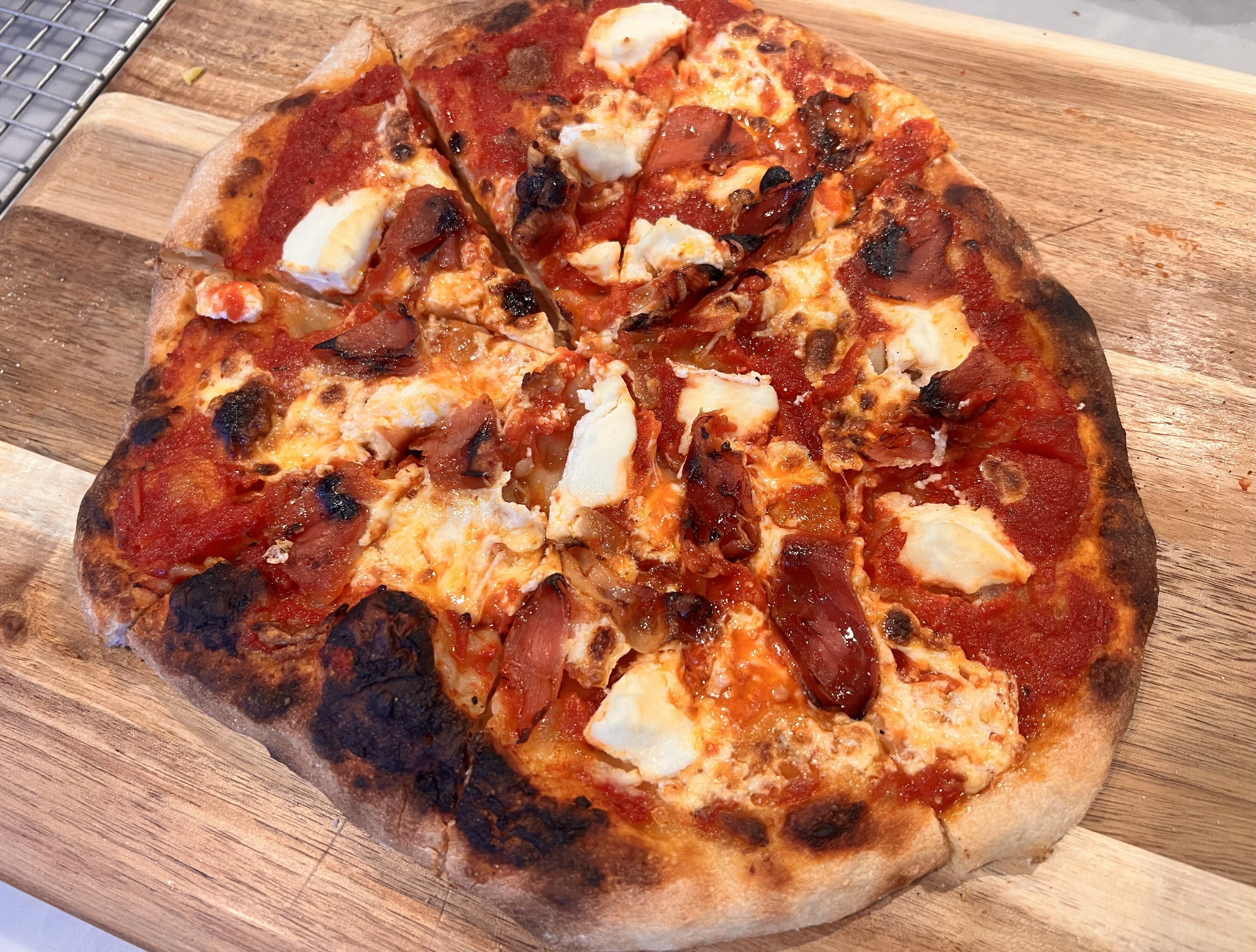Pizza just might be the most recognizable, if not most popular, food in the world! The market for frozen pizza in the U.S. alone is nearly $7 billion dollars with hundreds of brands and styles across the states. When it comes to take-out, it is estimated that the number of pizza places worldwide is in the hundreds of thousands with Dominos coming in at over 20,000 locations around the globe. The first restaurant I worked in at the age of 14 was a pizza place, and it wouldn’t be the last.
Pizza is such a popular business concept not only because everyone loves it but because it has to have one of the best price margins in the restaurant industry and is relatively easy to execute. However, anyone can make a pizza but not everyone can make a great pizza. There are many styles of pizza and everyone has their favorite but whether it's pan, deep dish, or thin crust, the key to cooking a great pizza is temperature. Typically cooked at a high heat to achieve a crispy crust and in some cases, delicious charring of the cheese or toppings, there are many apparatuses to cook a pizza. Many high-volume pizza joints will utilize a deck oven or conveyer belt style oven but the best pizza, or at least my favorite, is cooked in a wood or coal fired oven. This style of cooking achieves high temps and results in ultimate crispiness and wonderful smoky flavor, it is also the most traditional method of cooking a pizza.
These days, great pizza prepared in such a manner is becoming more and more expensive! Some of my go-to pizza places are reaching upwards of $20-$30 per pie, and I can only imagine that increasing over time. I can’t blame these establishments knowing what it costs to keep a restaurant above water no matter how great of an operational margin you have. There are ever rising costs of rent, labor, and ingredients, just to name a few.
So, how can you get the best pizza for the lowest price? Well, I had the opportunity over the past weekend to cook some pizzas in the Ooni Back Yard Pizza Oven and the results were excellent! The model I used was their entry level oven that uses coals or wood and is upgradable to propane. This sturdy little oven will cost you around $400, but if you love pizza and like to cook outdoors it will pay for itself in no time.
 I made a sourdough crust which I’ve included a recipe for and cooked off six pizzas with various toppings to get a feel for the oven. It was relatively easy to set up and reached temperatures of around 700 degrees! The pizzas cooked quickly and had crispy charred crust and that great smoky flavor from using natural hardwood coals.
I made a sourdough crust which I’ve included a recipe for and cooked off six pizzas with various toppings to get a feel for the oven. It was relatively easy to set up and reached temperatures of around 700 degrees! The pizzas cooked quickly and had crispy charred crust and that great smoky flavor from using natural hardwood coals.
 You could achieve a similar product just by using your charcoal grill and a pizza stone as well. We are now carrying Le Creuset's Alpine outdoor line and they have a pizza stone that easily distributes heat to achieve a perfectly crisp and evenly cooked crust.
You could achieve a similar product just by using your charcoal grill and a pizza stone as well. We are now carrying Le Creuset's Alpine outdoor line and they have a pizza stone that easily distributes heat to achieve a perfectly crisp and evenly cooked crust.

Sourdough Pizza Crust
Yield: 4 medium pizzas
Prep time: 3 hours
Inactive time: 9-18 hours
Total time: 12-18 hours
375 g water (I use Aqua Panna)
100 g sourdough starter, active and bubbly
10 g salt
500 g all-purpose or “00” flour
 1. Combine the starter, salt, and water in a bowl, and mix until the salt is dissolved.
1. Combine the starter, salt, and water in a bowl, and mix until the salt is dissolved.
2. Mix in the flour until completely incorporated. Cover and let stand at room temp for 30 minutes.
 3. After the dough rests, stretch and fold it several times and recover, repeat this process four more times over the course of 2 hours keeping the dough covered in between stretches.
3. After the dough rests, stretch and fold it several times and recover, repeat this process four more times over the course of 2 hours keeping the dough covered in between stretches.

 4. Move the dough to a large container and cover with a towel or cloth and allow to ferment at room temp for 6-12 hours. The dough should double in size.
4. Move the dough to a large container and cover with a towel or cloth and allow to ferment at room temp for 6-12 hours. The dough should double in size.
 5. After the dough has proofed, turn out onto a floured surface. Do not knead the dough any further!
5. After the dough has proofed, turn out onto a floured surface. Do not knead the dough any further!
6. Cut the dough into four equal pieces. Place into individual containers and place in the fridge to rest for 3-6 hours. Bring the dough back up to room temperature before using.
 7. To shape the dough, use a floured surface and stretch the dough into a circle, it is important that you stretch and pull the dough to shape it and not roll it out. Rolling the dough will press out the air pockets that were achieved during the proofing process!
7. To shape the dough, use a floured surface and stretch the dough into a circle, it is important that you stretch and pull the dough to shape it and not roll it out. Rolling the dough will press out the air pockets that were achieved during the proofing process!
8. Build the pizza on a peel dusted with semolina flour or corn meal, this is the easiest way to get the pizza into the oven.
 Don’t have a sourdough starter? This blog shows you how to get your sourdough starter going from scratch.
Don’t have a sourdough starter? This blog shows you how to get your sourdough starter going from scratch.
Join us for Hands-On Neapolitan Pizzeria Thursday, August 15 6pm for more tips and tricks about making great pizza at home.

Sourdough Pizza Crust
Ingredients
- 375 g water (I use Aqua Panna)
- 100 g sourdough starter, active and bubbly
- 10 g salt
- 500 g all-purpose or “00” flour
Instructions
- Combine the starter, salt, and water in a bowl, and mix until the salt is dissolved.
- Mix in the flour until completely incorporated. Cover and let stand at room temp for 30 minutes.
- After the dough rests, stretch and fold it several times and recover, repeat this process four more times over the course of 2 hours keeping the dough covered in between stretches.
- Move the dough to a large container and cover with a towel or cloth and allow to ferment at room temp for 6-12 hours. The dough should double in size.
- After the dough has proofed, turn out onto a floured surface. Do not knead the dough any further!
- Cut the dough into four equal pieces. Place into individual containers and place in the fridge to rest for 3-6 hours. Bring the dough back up to room temperature before using.
- To shape the dough, use a floured surface and stretch the dough into a circle, it is important that you stretch and pull the dough to shape it and not roll it out. Rolling the dough will press out the air pockets that were achieved during the proofing process!
- Build the pizza on a peel dusted with semolina flour or corn meal, this is the easiest way to get the pizza into the oven.











